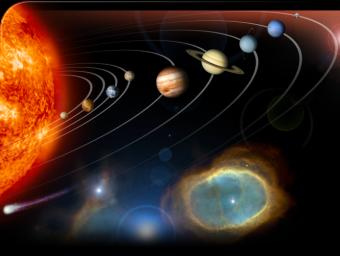Mary Frederick answered
This is an interesting question. I never thought about the rotation of the planets except in general terms. I just never thought about whether all the planets rotated in the same direction.
The solar system is a very interesting subject and someday I am going to take the time to study it more thoroughly.
Mercury and Venus rotate more slowly on their axis than do the other planets, however they do not rotate in the same direction. Venus looks beautiful in all the pictures and diagrams we see, however Venus can be deadly to anyone who tries to land there. It is the hottest of all the planets and second closest to the sun. Covered with fast moving sulphuric acid clouds that tap the heat from the sun. The atmosphere is thick in carbon dioxide. One would asphyxiate almost immediately, and the atmospheric pressure would crush you as the heat burned you.
Venus is called the morning star and evening star. It can be visible at dawn and dusk because of its closeness to the sun, much closer than earth is. Venus appears to change shape as the moon does as it orbits around the sun in a clockwise direction. As Venus rotates in a clockwise direction the other planets except for maybe Uranus rotate in a counterclockwise direction. Venus moves very slowly and a day on Venus takes 243 earth days. No one yet knows why Venus rotates clockwise. Scientists are continuing to study Venus in relation to the greenhouse effect, of global warming upon the earth.
The solar system is a very interesting subject and someday I am going to take the time to study it more thoroughly.
Mercury and Venus rotate more slowly on their axis than do the other planets, however they do not rotate in the same direction. Venus looks beautiful in all the pictures and diagrams we see, however Venus can be deadly to anyone who tries to land there. It is the hottest of all the planets and second closest to the sun. Covered with fast moving sulphuric acid clouds that tap the heat from the sun. The atmosphere is thick in carbon dioxide. One would asphyxiate almost immediately, and the atmospheric pressure would crush you as the heat burned you.
Venus is called the morning star and evening star. It can be visible at dawn and dusk because of its closeness to the sun, much closer than earth is. Venus appears to change shape as the moon does as it orbits around the sun in a clockwise direction. As Venus rotates in a clockwise direction the other planets except for maybe Uranus rotate in a counterclockwise direction. Venus moves very slowly and a day on Venus takes 243 earth days. No one yet knows why Venus rotates clockwise. Scientists are continuing to study Venus in relation to the greenhouse effect, of global warming upon the earth.

